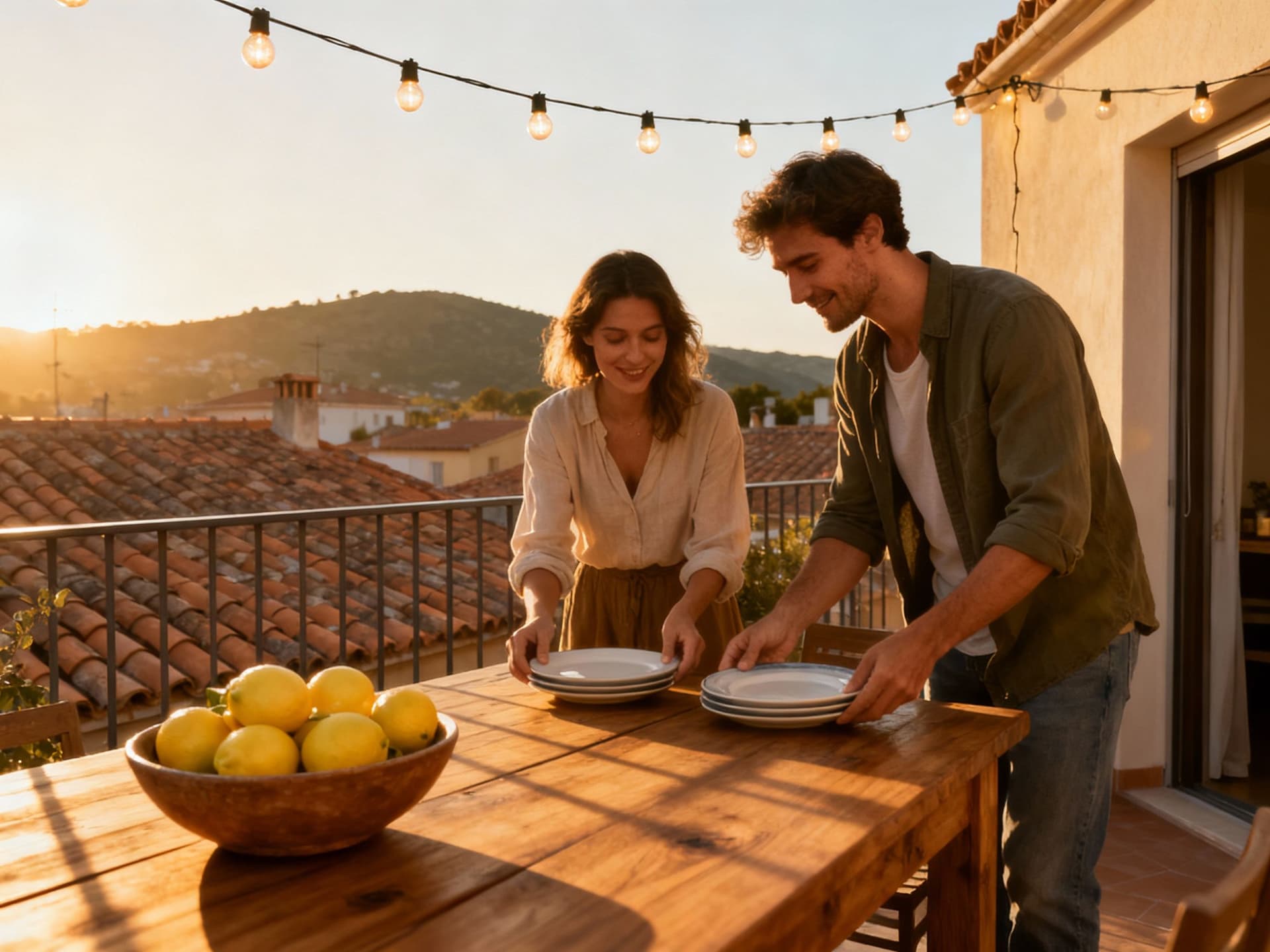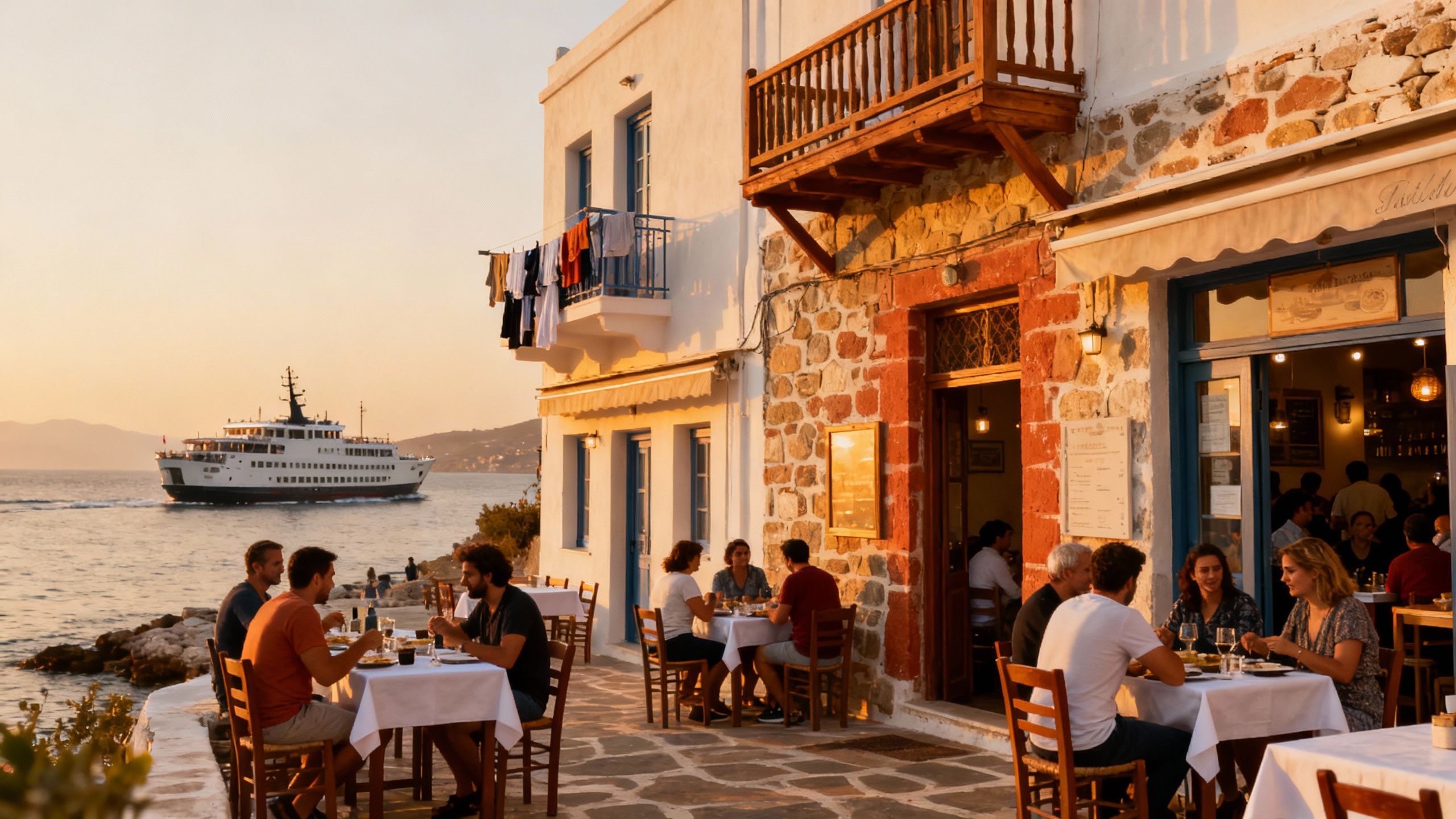Street Life vs Market Sense in Italy
Experience Italy’s neighbourhood rhythms—from markets to seaside terraces—and match that life to street‑level market data and local expertise for confident property decisions.
Imagine the smell of espresso at 08:30 on Via Toledo, the soft clack of Vespa wheels on cobbles in Trastevere, and a Saturday market where the fishmongers shout prices in Neapolitan—this is the daily texture of life in Italy. For international buyers the fantasy is seductive: piazzas, coastline, Renaissance architecture, and a slower rhythm to meals and Sundays. But lifestyle must meet reality: market rhythm, rental dynamics, and neighbourhood nuance change the way a purchase works here. Below we bring that life into focus, then match it to concrete market signals so you can fall in love—and buy with your eyes open.
Living the Italian Life: daily rhythms and neighbourhood character

Italy’s pace is defined by place. Coastal towns like Positano and Ligurian villages awaken to fishermen’s nets and seafood grills; Florence hums with museum crowds and student life; Milan wakes early for business and aperitivo culture. Tourism is a major part of the picture—official statistics show record-presence years and growing foreign visitors—which means neighbourhoods can feel very different between low- and high-season. That flux is part of the charm, but it affects utilities, maintenance expectations and short‑term rental demand, so your lifestyle choice has direct property implications.
City center vs. coastal village: choose the daily tempo
If mornings with café chatter and art-house cinemas sound right, central Rome (Trastevere, Monti) or Florence (Oltrarno) deliver that social life within walking distance. Coastal life—from the Ligurian Riviera to Puglia’s Salento—means later mornings, seafood markets, and an outdoor season that stretches from April to October. Consider practicalities: city apartments trade outdoor space for walkability, while coastal homes include terraces but may need stronger climate-proofing against salt and humidity. Pick the tempo you want and then match property type to it: small piazza apartments for cultural immersion, terraces and gardens for coastal living.
Food, markets and ritual: how meals define neighbourhood life
Markets and meals are the social infrastructure: Mercato Centrale in Florence, Mercato di Testaccio in Rome and local pescherie in coastal towns form weekly rhythms. Neighborhoods with daily markets keep small shops alive and create front‑door sociability that tourists won’t replace. Recent local policies—like restrictions on short‑term rentals in Florence’s historic centre—show how municipalities protect resident life, and those rules ripple into investment calculations for Airbnb-style income. If culinary life matters to you, prioritise streets with markets and a mix of residents rather than purely tourist strips.
- Lifestyle highlights to scout in person
- Strolls that matter: Lungarno in Florence, Viareggio promenade, Amalfi’s coastal footpaths.
- Markets: Mercato delle Erbe (Bologna), Mercato di Ballarò (Palermo), Mercato Centrale (Rome).
- Local cafés and rituals: espresso counters, late‑evening passeggiata, weekend agriturismo escapes.
Making the move: practical considerations tied to lifestyle

Dreams meet paperwork in Italy. National and local markets have diverged: Milan commands city‑centre premiums while secondary provincial towns show stronger rental yields. Recent market analysis highlights moderate price growth in many tourist and historic provinces while Milan remains expensive per square metre. For buyers who want life-first properties that also perform financially, balance city prestige against coastal or second‑tier towns where yields and renovation potential are stronger.
Property types and how they shape daily life
Historic apartments (centro storico) offer character: high ceilings, shutters, small kitchens and often strict heritage rules on changes. Modern developments—now expanding near Milan and Bologna—deliver insulation, parking and larger terraces essential for year‑round comfort. Coastal villas provide outdoor living but require ongoing maintenance: saltproof materials and drainage are not optional. Match property type to daily routines: if you value alfresco meals, prioritise terraces and outdoor storage; if you want effortless commuting, prioritise transport links and concierge services.
Working with local experts who understand both life and law
A local agent who knows the neighbourhood cafés and the municipal building office is invaluable. They translate lifestyle needs into search criteria, advise on renovation permits, and spot neighbourhood rules limiting short‑term lets. Use agents who publish comparable transactions and can introduce trusted notaries and builders; in Italy the notary finalises the deed and verifies title, so their role matters for certainty. Ask any agency for recent transaction references in the exact street or quarter you love—street‑level comparables matter more here than broad city averages.
- Steps that blend lifestyle and practical checks
- Walk your future neighbourhood twice: morning market, evening passeggiata; note noise, services, and resident-to-tourist ratio.
- Request three recent comparables on the street (same floor and orientation) and check permitted short‑term rental rules at municipal level.
- Factor climate adaptation costs: coastal salt corrosion, hillside waterproofing, and energy upgrades for winter comfort.
Insider knowledge: what expats wish they’d known
Expat stories repeat a few truths: language accelerates belonging, but small practical networks (building janitors, local bakers, the dentist) make life livable fast. Regional demographics matter: some southern towns face depopulation while northern cities attract more jobs and services—this affects both community life and long‑term value. Recent data also shows rising immigration and intra‑country moves, which can stabilise local services and create new neighbourhood scenes. Expect community character to evolve; buy where you want to live in five years, not just where the tourists are now.
Cultural nuances that change where you buy
Italian life is neighbourhood-centric: bocce courts, church squares and baristas are small institutions that anchor social life. Neighbours expect certain rhythms—late dinners, quiet midday breaks in small towns—that affect renovation planning (soundproofing matters) and appliance choices (gas cookers remain common). Respect for local regulations and etiquette eases buying and integration: speak to a neighbour before you buy if possible; they’ll tell you the truth about noise, floods, or stray‑dog rounds faster than any listing.
Long‑term lifestyle questions that affect value
Ask whether you want a lifestyle that’s seasonal (coastal summers) or year‑round (city life near hospitals, schools and international transport). School choice, healthcare access and broadband quality are lifestyle essentials that also prop up long‑term resale. For investors who also want to live there, consider towns with diversified economies—tourism plus local industry—because those areas often show steadier price performance through cycles.
- Red flags locals will tell you to check
- Repeated damp and mould in basements and cellars, especially in older coastal houses.
- Unclear condominium rules that limit renovations or short‑term rentals.
- Streets where daytime life is all short‑term rentals and restaurants, leaving little year‑round community.
- A short checklist to brief a local agent
- Name three streets you like and ask for comparables by street, floor and orientation.
- Request an inspection report that includes moisture testing and electrical compliance.
- Confirm local rules on short‑term lets and any pending municipal ordinances that affect use.
Conclusion: live the life, then validate the numbers
Italy offers a rare combination: rich daily life with clear neighbourhood personalities and a market where local detail matters more than national headlines. Start with the life you want—market street cafés or seaside terraces—then use street‑level comparables, local agents, and a notary to lock in legal certainty. If you want help matching lifestyle priorities to comparable transactions in a specific Italian street or quarter, reach out to vetted local agencies who combine cultural insight with transparent data. Fall in love deliberately: live the place first, then buy with evidence.
Norwegian market analyst who relocated to Mallorca in 2020. Focuses on data-driven market insights and smooth relocation for international buyers.


